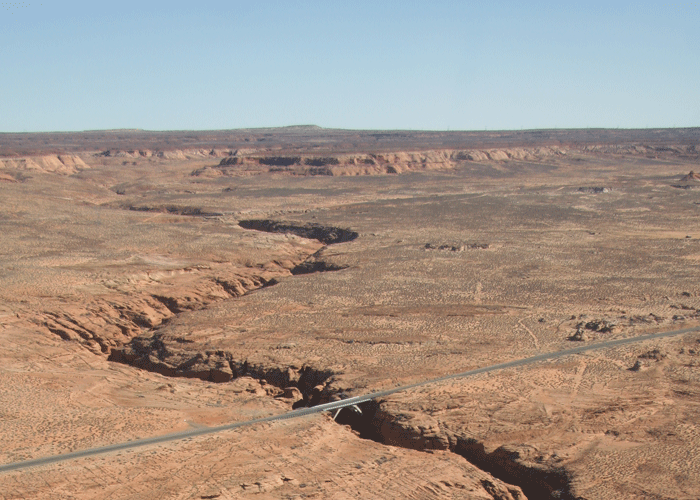The underlying causes of extreme heat in the Arizona desert
The underlying causes of extreme heat in the Arizona desert

Marble Canyon
By Ray Greely / ADOT Meteorology Intern
It is no secret that Arizona is known for its intense summer heat and dry climate. But what makes the deserts of this state so hot while states in the eastern half of the country with similar elevation and latitude are distinctly cooler?
For example, the all-time record high temperature for Phoenix, AZ is 122 degrees. But if we travel east to Atlanta, the highest temperature recorded is 106 degrees, and summer average high temperatures peak around 90 degrees.
To find the cause of this disparity, we can turn to the topography of the land in North America that shapes the distribution of moisture in the atmosphere. There are several factors that prevent moisture from reaching the Southwest, including Mexico’s large, rugged land mass, lack of evaporation in the eastern Pacific Ocean due to cool water temperature and mountains that run parallel to the West Coast.
| City | Latitude/Elevation | All-time record high Temp °F | Max average High temp °F | Annual Precipitation (in) |
|---|---|---|---|---|
| Phoenix, AZ | 33°N, 1106 FT | 122 | 106 | 7 |
| Atlanta, GA | 33°N, 96 FT | 106 | 89 | 50 |
How these factors work together to keep Arizona dry
Understanding how these factors keep Arizona so dry requires a little knowledge about how air flows around a low pressure system. The air adjacent to a low pressure system flows counterclockwise, and weather systems generally move from west to east for most U.S. locations (this changes during the Arizona monsoon). This means when a storm system approaches a specific location, the winds initially blow from the south, and this is the direction where the system picks up any available moisture to produce and-or enhance precipitation.

NOAA Weather Prediction Image
Let's compare the available moisture for low pressure systems that approach Arizona with those that pass through Georgia. Directly south of Arizona is the very large land mass of Mexico with very rugged terrain, while south of Georgia is the Gulf of Mexico, which supplies a lot of water vapor that can be converted into precipitation. In addition to this, Arizona receives little moisture from the west due to the rain shadow effect caused by mountains in California. This explains why Atlanta summers are much wetter and cooler than Phoenix despite similar latitude and elevation. The average relative humidity map below illustrates how topography reduces moisture in the western United States.

US Relative Humidity
Why does Arizona’s dry climate produce such hot temperatures?
One obvious answer to this is the lack of cloud cover in arid climates compared to their humid counterparts, and cloud tops that reflect a significant amount of the sun’s energy back into space so surface heating is reduced. Moisture in the air and ground also slow down the heating process because a portion of the sun’s energy is absorbed by the water vapor in the atmosphere or is spent on evaporating the water in the ground. As a result, as moisture decreases and surface heating increases. Even though the Arizona desert receives the same amount of solar energy as locations in the eastern third of the country with similar latitude and elevation, temperatures routinely exceed 100 degrees because the lack of moisture efficiently heats the ground and air.
Tips to prepare your vehicle for the extreme Arizona heat
Now that you know some of the reasons for Arizona’s extreme heat, we want you to be prepared before you hit the road this summer.
- Check tires for worn down tread and dry rot. Replace them if necessary.
- Be sure tires are inflated properly. Remember: Too much air pressure is just as bad as too little.
- Check fluids often and be sure the cooling system is in working order.
- Change the oil and be sure to have the proper oil weight for extreme heat.
- Replace any belts or hoses that have cracks and-or dry rot. If hoses are soft to the touch, they most likely need to be replaced.
- Be sure the car battery is charging properly.
Editor's Note: ASU’s School of Geographical Sciences & Urban Planning has partnered with ADOT to place graduate-level meteorology students in the ADOT Traffic Operations Center. This allows ADOT to have better information about weather conditions and more quickly determine how to deploy crews and communicate with the public.

